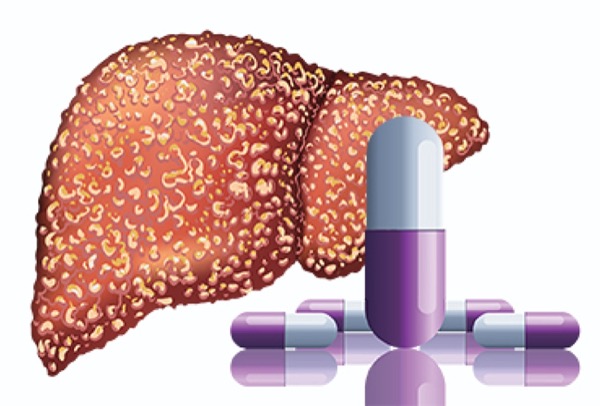Considering disease stage and indications for treatment allows for more personalized recommendations for use of beta-blockers for bleeding prevention in patients with cirrhosis, according to a recent literature review.
The therapeutic window for use of nonselective beta-blockers (NSBBs) traditionally was though to open when patients had high-risk varices, regardless of whether they had diuretic-responsive ascites, (Child-Pugh class B/C) and close when decompensated cirrhosis progressed to refractory ascites, the authors noted (J Hepatol 2023;78[4]:866-872).
However, they pointed out that recent studies, such as the PREDESCI trial benefit earlier in the course of cirrhosis progression, when patients develop clinically significant portal hypertension (CSPH). Some data have suggested that those with compensated cirrhosis and CSPH will benefit only if patients have varices, although this is yet to be conclusive. Regardless, the authors warn that potential of the expansion of the therapeutic window, to include compensated cirrhosis patients with CSPH, could result in overtreatment due to limitations in predictive values of liver stiffness testing. .
The authors propose that a clinician's selection of an NSBB should consider the indication for treatment and stage of cirrhosis (Table). Standard NSBBs such as propranolol, which exert their hemodynamic effects via beta-adrenergic blockade, are effective when splanchnic blood flow has increased. Carvedilol is a more novel NSBB that can antagonize both the alpha- and beta-adrenergic pathways, allowing it to counteract both increased splanchnic blood flow and increased hepatic resistance. Thus, it has greater portal pressure–lowering ability than propranolol.
| Table. Recommendations for NSBBS Use in Cirrhosis for Prevention of Bleeding and Decompensation | |||
| Indication and Disease Stage | Recommendation | Rationale | |
|---|---|---|---|
| Prevention of decompensation | CSPH present, varices absent | Inconclusive | Trial data analyses suggest benefit may not be present in patients without varices |
| CSPH present, varices present | Carvedilol | Carvedilol has a greater portal pressure–lowering effect than propranolol; greater pressure reduction associated with lower likelihood of decompensation | |
| Prevention of bleeding | Moderate-to-severe ascites absent | Carvedilol (+ EBL, if recurrent bleeding) | Carvedilol has a greater portal pressure–lowering effect, is easier to titrate, and has similar safety versus propranolol |
| Moderate-to-severe ascites present | Propranolol (<160 mg/day) (+ EBL, if recurrent bleeding) | Lack of robust rebleeding data comparing carvedilol with standard NSBB Potential for carvedilol to worsen peripheral vasodilation and increase renal sodium and water retention | |
| Refractory ascites present | EBL or transjugular intrahepatic portosystemic shunt | NSBBs may cause kidney failure in patients with refractory ascites due to reduced cardiac reserve | |
| CSPH, clinically significant portal hypertension; EBL, endoscopic band ligation; NSBBs, nonselective beta blockers | |||
However, they cautioned that carvedilol may not be appropriate for all patients because its alpha-adrenergic blocking effects extend beyond the liver and can “worsen peripheral vasodilation and increase renal sodium and water retention in patients with moderate-to-severe ascites in whom an upregulated sympathetic nervous system helps to maintain arterial pressure.”
A known drawback of NSBBs is the large variation in the decrease in portal pressure gradient achieved across patients, the authors pointed out. Thus, in the future, they said they hope to have reliable biomarkers or noninvasive surrogates to help predict individual patient response and inform treatment selection. Among those who are treated, the authors emphasized the importance of close monitoring due to the potential need for dose-adjustment or (temporary) discontinuation.
The researchers noted a few points for clinicians to consider when applying their recommendations in practice. They noted that etiology had an effect on the likelihood of cirrhosis progression, which may inform treatment appropriateness. They also noted that etiology could also inform the duration of NSBB treatment, particularly in patients with hepatitis C virus cirrhosis, in whom NSBBs can be withdrawn under certain circumstances after HCV cure. Further research is needed to understand whether discontinuation is appropriate for other cirrhosis etiologies.
—Natasha Albaneze, MPH
{RELATED-HORIZONTAL}
